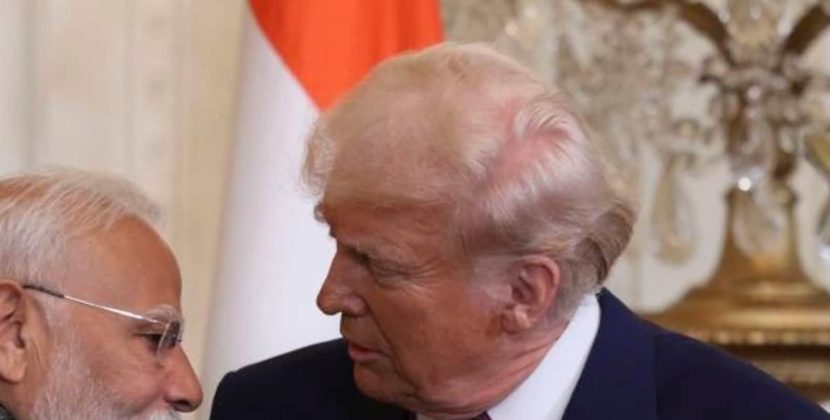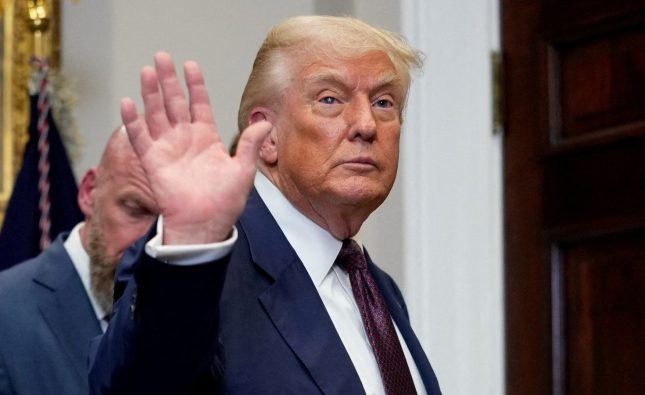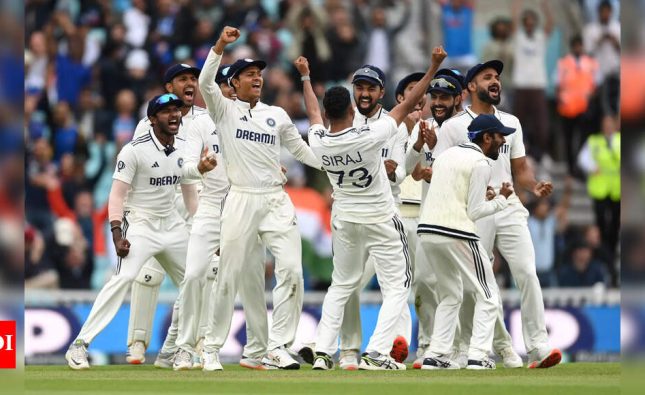
The Trump administration still values the U.S.-India partnership, officials say. But ties between Washington and New Delhi have steadily soured over disputes about trade, Russia and whether Trump deserves credit for brokering a cease-fire following a four-day conflict in May between India and its rival Pakistan.
The standoff, fueled by the president’s public broadsides against India, threatens to sink a key but complex geopolitical relationship and break the bonds Trump has forged with Indian Prime Minister Narendra Modi. The fractures have appeared as U.S. ties with Pakistan have grown in recent months, culminating in a White House meeting between Trump and the country’s powerful army chief, Asim Munir, in June.
Modi “must be very, very unhappy,” said Manoj Joshi, a distinguished fellow at the Observer Research Foundation, an Indian think tank.
India, viewed by the U.S. as a bulwark against China, has rankled Washington with its persistent relationship with Russia. New Delhi purchases Russian oil and weapons, propping up Russia’s economy, and along with Moscow is part of a loose, five-nation grouping of nations known as the Brics.
As Trump has turned against Russian President Vladimir Putin for not ending the war in Ukraine, he has vowed to impose tariffs on countries that do business with Moscow. India, Trump said Wednesday, would incur a “penalty” for its continued purchases of Russian goods.
“I don’t care what India does with Russia. They can take their dead economies down together, for all I care,” Trump added in another social-media post Thursday.
President Trump hosted Indian Prime Minister Narendra Modi at the White House in February.
Indian Ministry of External Affairs spokesman Randhir Jaiswal told reporters Friday that the U.S.-India relationship “has weathered several transitions and challenges. We remain focused on the substantive agenda that our two countries have committed to and are confident that the relationship will continue to move forward.”
Still, Trump’s comments are a stark shift from the early days of the administration, when officials in both Washington and New Delhi hoped to build on the Trump-Modi relationship established during the president’s first term. Mike Waltz called ties between the two countries “the most important relationship of the 21st century” before Trump tapped him as national security adviser.
Trump hosted Modi at the White House in February and praised him as a “much better negotiator,” while Modi mirrored Trump’s campaign catchphrase and said he wanted to “make India great again.” High-profile visits to New Delhi by Director of National Intelligence Tulsi Gabbard and Vice President JD Vance followed.
Yet the warm glow faded in the following months, when efforts to swiftly clinch a bilateral trade deal foundered. Trump, current and former officials said, is deeply frustrated by the lack of progress with New Delhi.
A point of contention in tariff negotiations is the U.S.’s push to open India’s agricultural markets, which employs over 40% of the country’s workforce.
Opening up the sector, which has long been protected by New Delhi, would anger India’s farmers, a powerful voting bloc. That presents a perilous political risk for Modi, who abandoned an effort in 2021 to deregulate the agricultural sector after facing nationwide protests from farmers.
Trump said the U.S. and India are still negotiating a trade deal even after the Aug. 1 deadline for an agreement.
A screen at the Bombay Stock Exchange building in Mumbai showed a news broadcast Thursday on Trump’s tariffs.
Credit for a cease-fire
U.S.-India ties hit another snag in May when India and Pakistan, both nuclear powers, clashed over a four-day stretch. The conflict started after a militant attack in the Indian-administered Kashmir region that Modi’s government blamed on Pakistan. Pakistan denied any role in the assault.
As the conflict raged, the U.S. received intelligence that India launched the Brahmos cruise missile to strike targets in Pakistan, according to Trump administration officials. The U.S. assesses that the weapon, produced in partnership with Russia, can carry nuclear warheads, current and former officials said, though India says it is solely a conventional missile.
Trump feared that India might decide to equip one of the missiles with a nuclear bomb if the crisis spiraled out of control, officials said, or that Pakistan could decide to launch a nuclear device of its own, leading Trump to encourage Vance and Secretary of State Marco Rubio to call their counterparts.
Trump posted on social media that his team brokered a deal that led to a cease-fire on May 10. Pakistan embraced the announcement, praising Trump and nominating him for the Nobel Peace Prize.
India, by contrast, bristled at Trump’s assertions and insisted no outside power dictated the cease-fire. India’s insistence that the U.S. role was overblown has privately angered Trump, who has told aides he’s upset with Modi for not thanking him.
A White House official said Trump leveraged his relationships with both India and Pakistan to secure a cease-fire that the administration insists could have gone nuclear without his involvement. The official wouldn’t comment on India’s use of the Brahmos missile as the reason for Trump’s concerns.
Officials at the Indian Embassy in Washington said India has a no-first-use nuclear policy, so its use of the Brahmos missile should have caused no alarm in the U.S. about a nuclear escalation.
Trump strained ties even further by offering to mediate the longstanding Kashmir dispute between India and Pakistan.
“That was embarrassing for India. India has always rejected the idea of third-party mediation, something that Pakistan has always sought,” said Lisa Curtis, a former senior National Security Council official who oversaw South Asia policy in Trump’s first term. “If there had just been one or two tweets on May 10, the two sides could have recovered from it. However, Trump has talked multiple times about the U.S. bringing about the cease-fire.”
Russian ties
Trump’s embrace of Pakistan and pressure on India over its ties with Russia and trade could backfire at just the moment when India was warming up to defense ties with the West.
“It’s going to push India increasingly into the hands of Russia,” said Derek Grossman, a former U.S. intelligence official and professor on Indo-Pacific security affairs at the University of Southern California.
In recent years, India has sought to pivot away from relying on Russia for military equipment, especially after the Ukraine war cut off the ready flow of Russian-made weapons.
From 2020 to 2024, India imported 36% of its military hardware from Russia, its largest supplier, according to the Stockholm International Peace Research Institute. That was a shift from the 2006-10 period, when 82% of India’s military equipment was imported from Russia.
The U.S. has previously targeted Indian businesses for allegedly helping Russia evade sanctions by selling dual-use technology that could bolster Moscow’s military production.
In announcing that the U.S. would place 25% tariffs on Indian goods, Trump also criticized India for purchasing large quantities of Russian oil. India has taken advantage of discounted oil prices from Russia after many Western countries stopped buying or curbed their purchases. In the last quarter of 2024, India accounted for one-third of Russia’s oil exports, according to ORF.
“It is most certainly a point of irritation in our relationship with India—not the only point of irritation,” Rubio said in a Fox News interview on Thursday. “With so many other oil vendors available, India continues to buy so much from Russia, which in essence is helping to fund the war effort and allowing this war to continue in Ukraine.”
The newfound U.S. attention to the matter has put India in a bind.
“Abruptly dropping Russian oil will have consequences for the relationship. On the other hand, the promised U.S. sanctions will have their own impact,” said ORF’s Joshi. “Just how to square this circle is a tough one.”
Write to Alexander Ward at alex.ward@wsj.com, Robbie Gramer at robbie.gramer@wsj.com and Shan Li at shan.li@wsj.com












